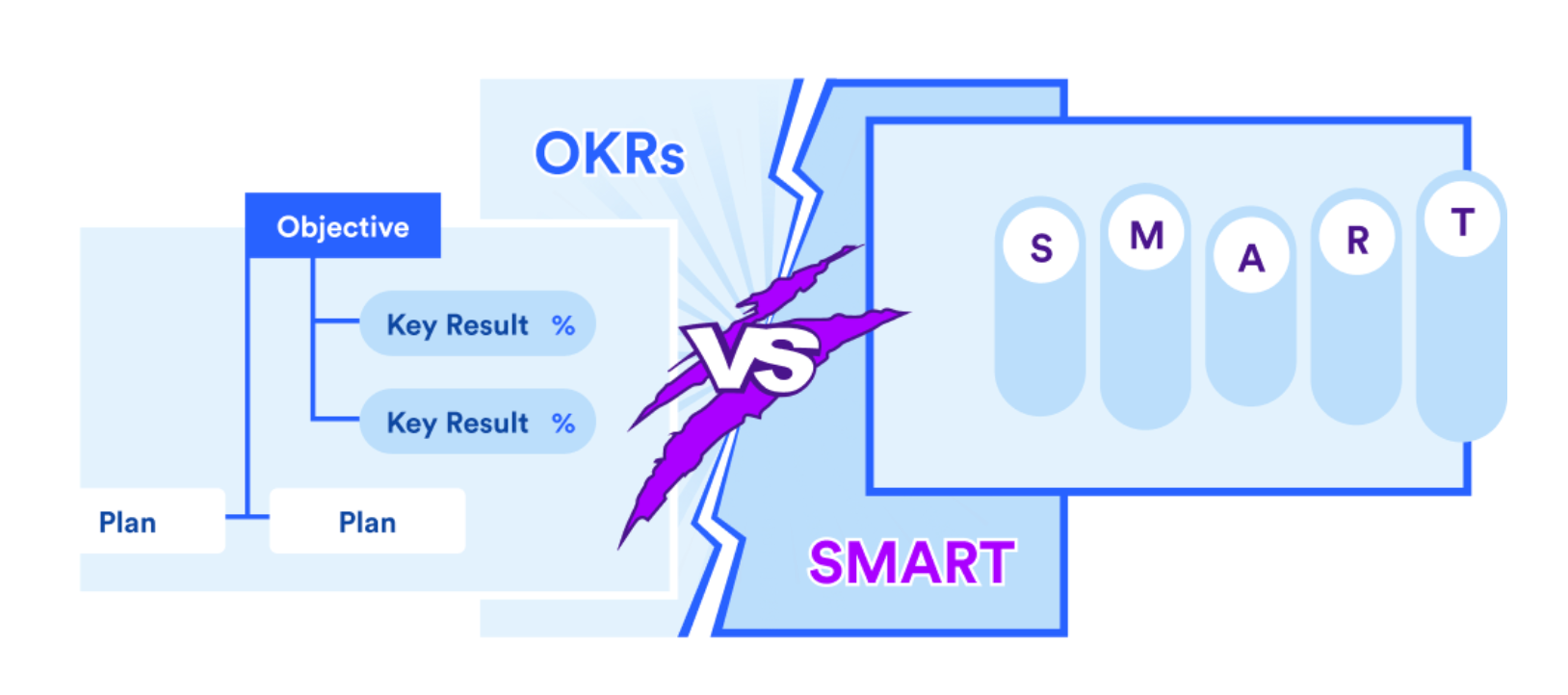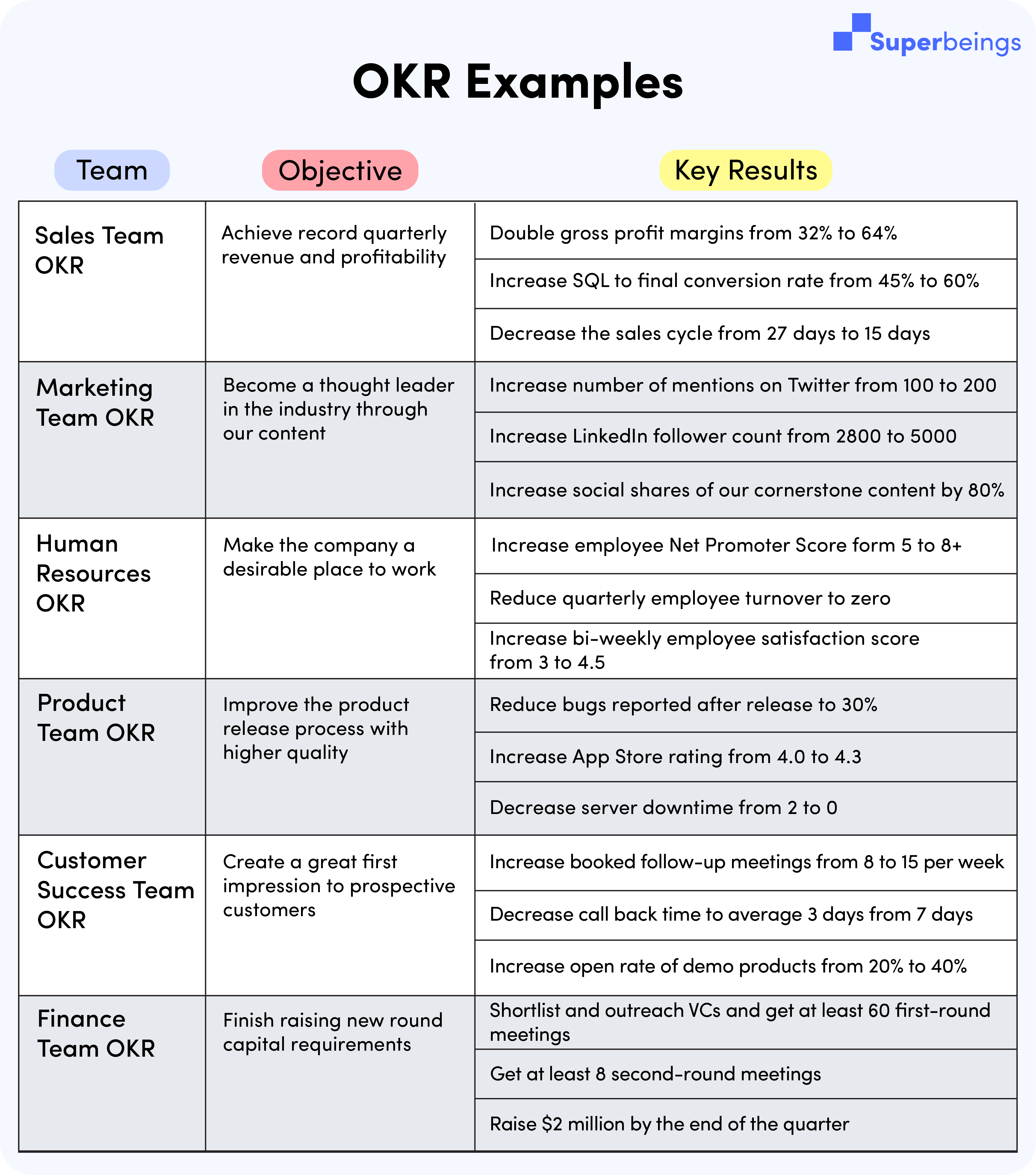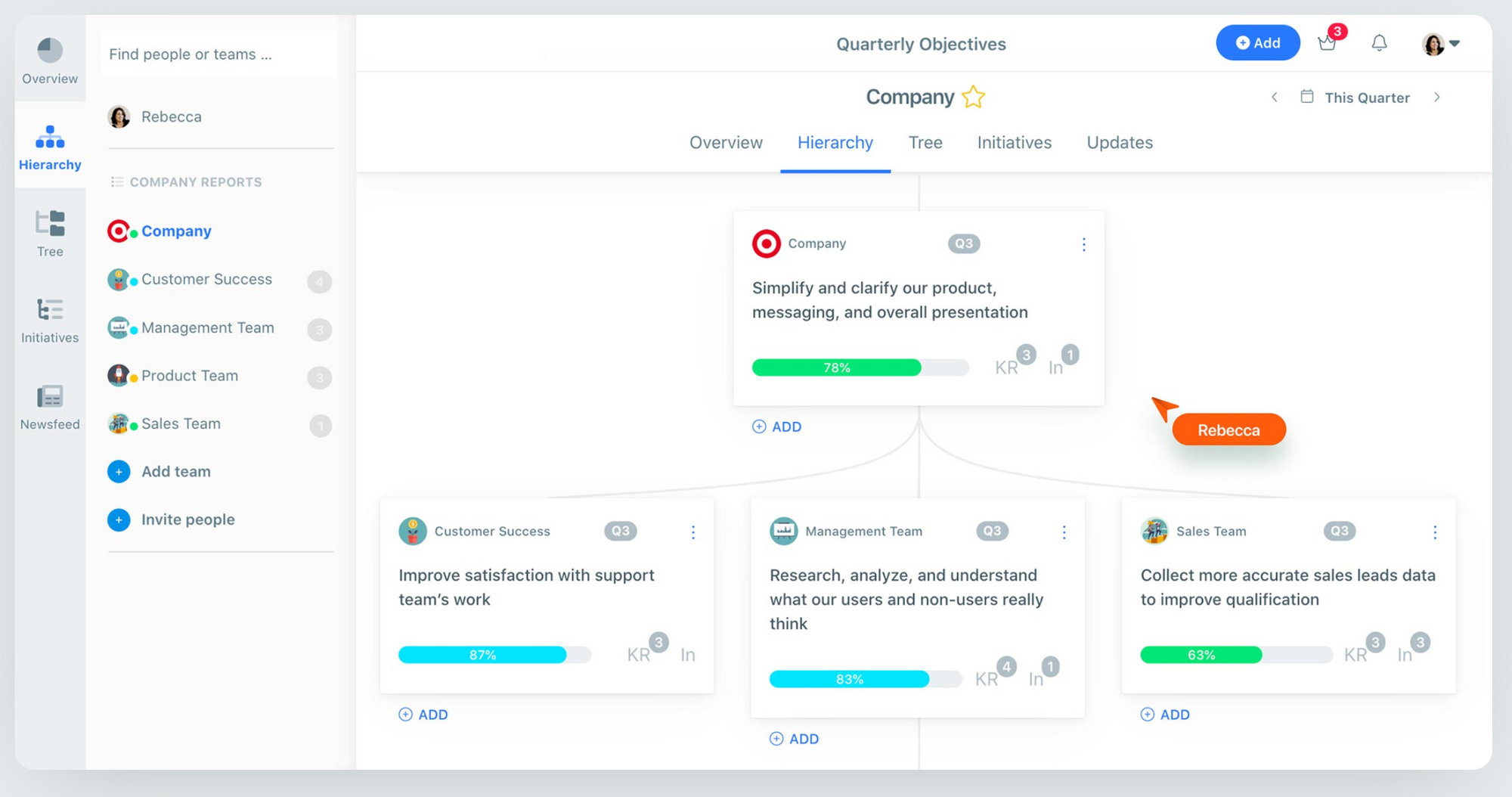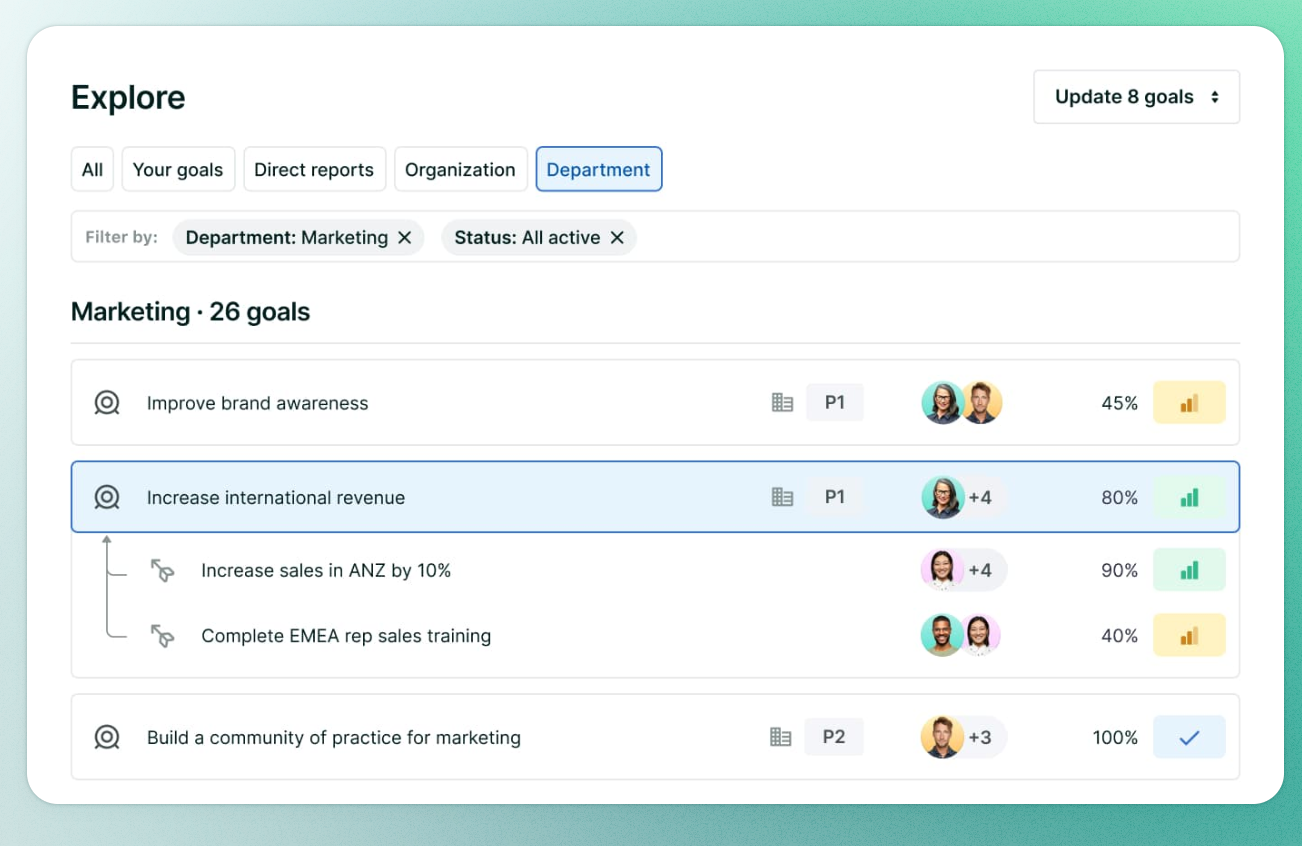How to apply this method?
SMART goals and OKRs (Objectives and Key Results) are two methods commonly used to set and track measurable goals, but they differ in approach and focus.
SMART goals emphasize Specific, Measurable, Achievable, Relevant, and Time-bound criteria, providing a structured framework for setting realistic and actionable short-term targets.
OKRs, on the other hand, are stretch-goals that consist of a broad and inspiring Objective paired with 2-5 measurable Key Results, often aiming for more ambitious, long-term achievements.
OKRs often inspire innovation and alignment with a broader vision, whereas SMART goals are typically more tactical and focused on individual or team-level accomplishments within a shorter timeframe.

If you want to go for a simpler method, use SMART goals to start with. If you want to use a scalable system that connects well to the operational aspects and project management system of your company use OKRs.
These two can also be combined (e.g. using OKRs and then defining key results by using SMART principles).
How to define SMART Goals?
Specific (S): Define exactly what you want to achieve. Avoid vague terms and be clear about the outcome you desire.
- E.g., Instead of "Increase revenue," specify "Increase revenue by 15% in the next quarter."
Measurable (M): Determine how you will measure progress. Define specific metrics or key performance indicators (KPIs).
- E.g., Track weekly sales numbers to monitor progress.
Achievable (A): Evaluate resources and constraints to ensure that the goal is realistic. Set a challenging yet attainable target.
- E.g., Is the 15% revenue increase feasible with current resources and market conditions?
Relevant (R): Ensure that the goal aligns with the overall mission and long-term objectives of the startup.
- E.g., Does the revenue increase support the overall growth strategy?
Time-bound (T): Set a clear timeframe for achieving the goal. This creates urgency and helps with planning.
- E.g., The 15% revenue increase must be achieved by the end of the next quarter.
How to set OKRs?
Set Clear Objectives: Define what you want to accomplish at a high level. These should be inspirational and aligned with the startup's vision.
- E.g., "Become a market leader in our region."
Identify Key Results: Determine 2-5 specific, measurable outcomes that will indicate success in reaching the objective.
- E.g., Increase customer base by 20%, Achieve a Net Promoter Score of 80, Reduce churn rate to below 5%.
- Align with the Team: Ensure that the OKRs are communicated and understood across the startup. Everyone should know how their work contributes to the objectives.
- Monitor Progress Regularly: Set regular check-ins (such as weekly or monthly) to assess progress and make necessary adjustments.
- Reflect and Reset: At the end of the OKR period (often quarterly), review the outcomes, learn from the successes and failures, and set new OKRs for the next period.
Both SMART goals and OKRs can be powerful tools for a startup founder. SMART goals often work well for shorter-term, tactical planning, while OKRs can be inspirational and drive strategic alignment. By following these simple processes, founders can create a focused and aligned path toward achieving key milestones and building momentum for their startup.
Examples - What does it look like?
Here is an example of well-structured OKRs

Tips and Tricks
- Keep the number of SMART goals or OKRs to the minimum. It's a common mistake to add too many Goals or OKRs in the first strategic planning of any company overestimating how much you can do
- Make your Objectives inspirational and follow SMART principles for Goals - Avoid easy-to-hit goals, uninspiring projects, or limited innovation. Objectives should set the bar high and force the team to make hard decisions to improve the organization
- Make sure that you use quantities and ratios in every key result and goal to make them measurable
- Share the Goals and OKRs with the whole organization - transparency builds alignment and trust
- Integrate Goals and OKRs in the weekly and daily routines to make sure you remind the team about your goals so they can align with them
Tools
OKRs and Goals could be documented in any simple tool like Notion or Trello.
If you want to use a specialized tool with extra features, here are some of our recommendations.
Other Tools:
BetterWorks - https://www.betterworks.com/product/
Books and Articles
Measure what Matters - https://www.amazon.com/Measure-What-Matters-Simple-Drives/dp/024134848X
Radical Focus - https://www.amazon.com/Radical-Focus-Achieving-Important-Objectives/dp/0996006028





